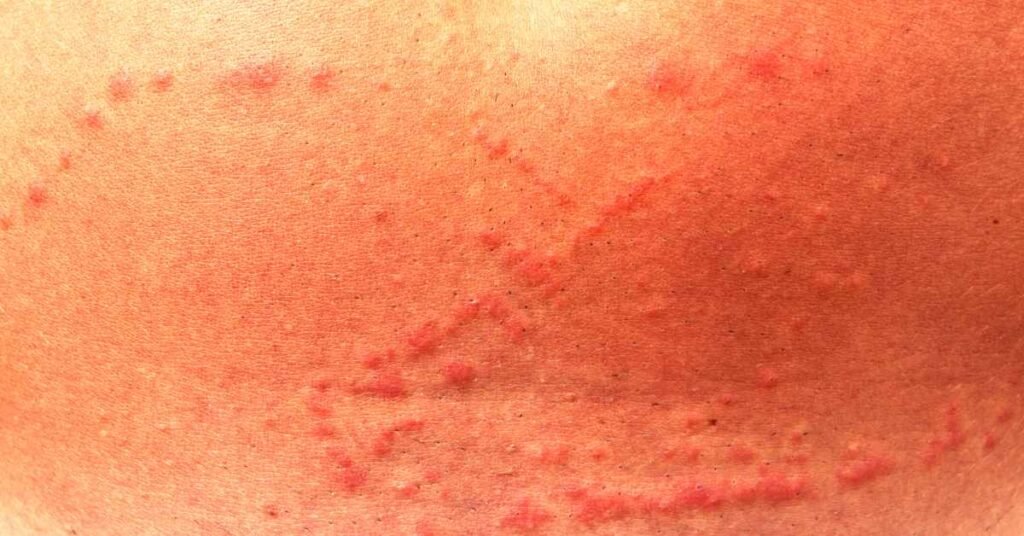Tea, a beloved beverage enjoyed by millions around the world, has found itself playing an unexpected role in the realm of first aid – specifically in the treatment of jellyfish stings.
Beyond its comforting warmth and diverse flavors, tea possesses unique properties that can provide relief and aid in the healing process when faced with the painful aftermath of a jellyfish encounter.
In this article, we will explore the science behind tea’s efficacy, the types of tea recommended for jellyfish stings, and the proper steps to take when using tea as a remedy.
Understanding Jellyfish Stings

Before delving into the healing powers of tea, it’s essential to understand the mechanics of a jellyfish sting.
When a jellyfish comes into contact with human skin, specialized cells called nematocysts release venom, causing a burning sensation, pain, and, in severe cases, allergic reactions.
While immediate action, such as rinsing the affected area with seawater, is recommended, finding a suitable remedy to alleviate the pain and aid in the healing process is equally crucial.
Tea’s Therapeutic Qualities
Tea, derived from the Camellia sinensis plant, is renowned for its rich antioxidants, anti-inflammatory properties, and various health benefits.
These properties are what make tea an effective remedy for jellyfish stings.
Let’s explore the key components of tea that contribute to its therapeutic qualities:
- Tannins: Tannins are polyphenolic compounds found in tea, known for their astringent and anti-inflammatory properties. When applied topically, tannins can help reduce swelling and alleviate pain associated with jellyfish stings.
- Antioxidants: Tea is a rich source of antioxidants, such as catechins, which can help neutralize free radicals and promote healing. By combating oxidative stress, antioxidants contribute to the overall recovery process from jellyfish stings.
- Anti-Inflammatory Compounds: The anti-inflammatory compounds in tea, including epigallocatechin gallate (EGCG), can help soothe irritated skin and reduce redness caused by jellyfish venom.
Recommended Teas for Jellyfish Stings
Not all teas are created equal when it comes to treating jellyfish stings.
Certain types of tea contain higher concentrations of the aforementioned therapeutic components, making them more effective remedies.

Here are some recommended teas for treating jellyfish stings:
- Green Tea: Green tea is renowned for its high levels of antioxidants and anti-inflammatory properties. The presence of EGCG in green tea makes it a particularly effective option for alleviating the discomfort caused by jellyfish stings.
- Black Tea: Black tea, derived from fermented tea leaves, contains tannins that contribute to its astringent qualities. Applying black tea to a jellyfish sting can help reduce swelling and ease the pain.
- Chamomile Tea: Chamomile tea, known for its calming and anti-inflammatory properties, can be a soothing option for treating jellyfish stings. The gentle nature of chamomile makes it suitable for individuals with sensitive skin.
- Peppermint Tea: Peppermint tea, with its cooling effect, can provide relief from the burning sensation associated with jellyfish stings. The menthol in peppermint has a numbing effect that can help alleviate pain.
Application Methods
Once you’ve selected the appropriate tea for treating a jellyfish sting, it’s crucial to apply it correctly to maximize its benefits. Here’s a step-by-step guide on how to use tea as a remedy:
Brew the Tea:
Start by brewing a strong cup of the selected tea. Use hot water and let the tea steep for at least 5-10 minutes to extract the maximum amount of therapeutic compounds.
Cool the Tea:
Allow the brewed tea to cool to a comfortable temperature. It should be warm enough to provide relief but not too hot to cause further discomfort.
Soak a Cloth or Gauze:

Dip a clean cloth or gauze into the cooled tea, ensuring that it absorbs a sufficient amount of the liquid.
Apply to the Affected Area:
Gently apply the tea-soaked cloth or gauze to the jellyfish sting. Make sure to cover the entire affected area, allowing the therapeutic properties of the tea to work on the skin.
Repeat as Needed:
Continue applying the tea remedy to the jellyfish sting several times a day. The frequency of application will depend on the severity of the sting and the individual’s sensitivity.
Precautions and Additional Tips
While tea can offer relief for jellyfish stings, it’s essential to consider a few precautions and additional tips:
Consult a Healthcare Professional:
If the jellyfish sting is severe, involves a large area of the body, or if the individual exhibits signs of an allergic reaction, seek immediate medical attention. Tea remedies should complement standard first aid measures, not replace them in critical situations.
Avoid Vinegar:
Contrary to popular belief, vinegar is not recommended for treating jellyfish stings from all species. Some jellyfish venoms, such as those from box jellyfish, may be activated by vinegar. In such cases, using tea or seawater for initial rinsing is safer.

Be Mindful of Allergies:
Individuals with known allergies to specific types of tea should exercise caution and choose an alternative that suits their skin. Patch testing in a small area before widespread application is advisable.
Maintain Good Hygiene:
Keep the affected area clean and avoid scratching or rubbing the sting, as this can worsen the irritation. If the pain persists or the condition worsens, seek professional medical advice.
Final Word
Tea’s remarkable therapeutic qualities extend beyond the confines of a teacup, offering a soothing touch to those grappling with the discomfort of jellyfish stings.
With its rich array of antioxidants, anti-inflammatory compounds, and astringent properties, tea stands as a natural and accessible remedy for providing relief in the aftermath of a jellyfish encounter.
While tea cannot replace professional medical care in severe cases, it can be a valuable addition to the first aid toolkit for minor jellyfish stings, offering comfort and promoting the healing process.
So, the next time a jellyfish encounter leaves you stinging, consider reaching for a cup of tea – nature’s healing elixir.
MEDICAL DISCLAIMER
Itsnevernotteatime.com cannot and does not contain medical/health advice. The medical/health information is provided for general and educational purposes only and is not a substitute for professional advice.




